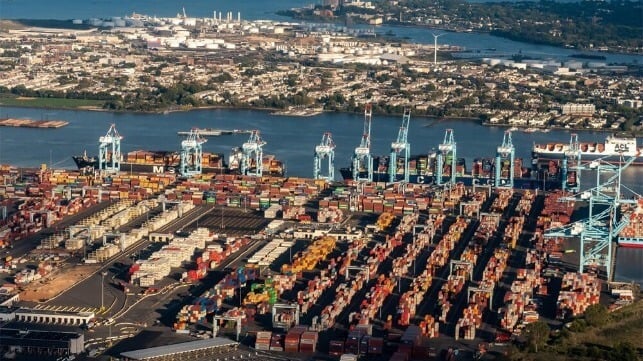
/tpg%2Fe4041e75-49ca-48f8-a364-e0b2dabed7e6.jpeg)


The International Longshoremen’s Association (ILA) is currently in negotiations with the U.S. Maritime Alliance (USMX) as their contract is set to expire on January 15, 2025. The ILA is demanding wage increases from $39 to $54 per hour, while USMX has offered a 40% raise. This standoff has put U.S. retailers and logistics providers on edge, as a potential strike could severely disrupt the supply chain, particularly for agricultural products and fresh produce, which are especially vulnerable. Notably, two-thirds of U.S. bananas arrive at East Coast ports, raising concerns about potential shortages if negotiations fail. [a775d4b5]
The American Apparel & Footwear Association has called for the ILA to resume contract negotiations, emphasizing the support of President-elect Donald Trump. Trump has highlighted the importance of dockworkers and warned foreign companies to respect their rights. The apparel industry warns that a labor strike could cost the U.S. economy between $4.5 billion and $7.5 billion weekly, referencing a previous three-day strike in October 2024 that caused significant backlogs. [bae6dcb1]
The recent ILA strike in October 2024, which lasted two days, reportedly cost the U.S. economy over $5 billion daily, emphasizing the significant impact of labor disputes on economic stability. Economists have warned that a repeat of the 2002 strike, which cost the economy an estimated $1 billion per day, could be dwarfed by the projected costs of a new strike, with JPMorgan Chase estimating losses between $3.8 billion and $4.5 billion daily. [bfd1763a]
ILA's Executive Vice President Dennis Daggett acknowledged Trump's understanding of their concerns regarding automation in the industry. Over 250 trade associations have urged the ILA and USMX to negotiate, highlighting the need for modernization in ports. The urgency of addressing rising freight costs and container shortages remains critical, particularly for exporters reliant on timely shipments. [bae6dcb1]
As the January deadline approaches, the potential for another strike looms large, with significant implications for the U.S. economy and the global supply chain. Political figures, including Vice President Kamala Harris and former President Donald Trump, have expressed support for the dockworkers during the previous strike, emphasizing the profits of foreign-owned shipping companies. [cb169701]
The implications of a strike are significant; a 30-day work stoppage could cost the New York/New Jersey economy approximately $640 million per day. Neil Bradley from the U.S. Chamber of Commerce has criticized the disconnect between union leadership and American workers, suggesting that the leadership's focus on high compensation may not align with the needs of the broader workforce. [bfd1763a]
Adding to the complexity, the global landscape of labor strikes continues to evolve, with potential for more unrest in Europe and Australia, which could further disrupt global trade and increase inflation. Australian workers have expressed unrest over job cuts and productivity reductions, adding to the growing list of industries suffering from labor disputes. [e61e57c5]
As the situation develops, companies are urged to negotiate swiftly to avoid disruptions that could have far-reaching consequences for the economy and supply chains across various sectors. [a775d4b5]